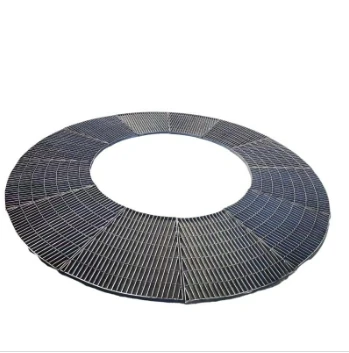Silo Butterfly Valve Applications and Benefits in Industrial Settings
Understanding Silo Butterfly Valves Essential Components for Efficient Operations
Silo butterfly valves play a crucial role in various industrial applications, particularly in the management and control of bulk solids and liquids. These valves are designed to regulate flow, prevent backflow, and ensure the safe handling of materials within silos. This article will delve into the functioning, benefits, and applications of silo butterfly valves, highlighting their importance in numerous industries.
What is a Silo Butterfly Valve?
A silo butterfly valve is a type of quarter-turn valve that consists of a circular disc or plate that rotates around an axis to control the flow of materials. When the valve is in the open position, the disc is parallel to the flow, allowing unrestricted passage of materials. Conversely, when the valve is closed, the disc is perpendicular to the flow, effectively blocking it. This simple yet effective design allows for quick operation, typically requiring only a 90-degree turn.
How Does It Work?
The operation of a silo butterfly valve is relatively straightforward. It typically involves a few essential components the valve body, a disc, a stem, and an actuator. The valve body is designed to withstand the pressure and conditions within the silo, while the disc is crafted from durable materials to endure wear and tear.
Actuators can be manual, pneumatic, or electric, providing flexibility in control mechanisms. When the actuator is engaged, it turns the stem, which is connected to the disc, causing it to rotate. This action either opens or closes the valve, thus regulating the flow of materials. Depending on the application, various designs and materials (such as stainless steel or plastic) can be used to manufacture the valve to meet different needs.
Benefits of Silo Butterfly Valves
1. Ease of Operation One of the main advantages of silo butterfly valves is their simple operation. The quarter-turn design allows for quick opening and closing, making them ideal for processes that require rapid flow adjustments.
silo butterfly valve

2. Space-Saving Design Unlike traditional gate valves, the compact structure of butterfly valves makes them suitable for installations where space is limited. They can be mounted in tight areas without compromising functionality.
3. Versatility Silo butterfly valves are versatile and can be used for a variety of applications, including the handling of grains, powders, slurries, and liquids. This adaptability makes them an excellent choice for diverse industries such as food processing, pharmaceuticals, and chemicals.
4. Cost-Effectiveness With relatively low manufacturing costs and minimal maintenance requirements, silo butterfly valves are an economical solution for many bulk handling operations. Their durability means they require less frequent replacement, further reducing lifetime costs.
5. Low Flow Resistance The streamlined design of the valve minimizes flow resistance, allowing for efficient material transfer and reducing energy consumption in pneumatic conveying systems.
Applications of Silo Butterfly Valves
Silo butterfly valves find usage across various sectors. In the food industry, they help in controlling the flow of ingredients, while the chemical industry utilizes them for handling corrosive substances. Furthermore, in wastewater treatment facilities, these valves play a crucial role in regulating the flow of sludge and effluents.
Additionally, they are integral to the construction and mining industries, where they manage the flow of materials such as cement, sand, and aggregates within silos and storage tanks.
Conclusion
Silo butterfly valves are indispensable in modern industrial processes, providing efficient and reliable flow control in various applications. Their unique design, ease of use, and cost-effectiveness make them a preferred choice for many engineers and operators. As industries continue to evolve, the demand for reliable valves will only increase, underscoring the importance of understanding and implementing effective solutions like the silo butterfly valve in managing materials safely and efficiently.
-
The Smarter Choice for Pedestrian AreasNewsJun.30,2025
-
The Gold Standard in Round Drain CoversNewsJun.30,2025
-
The Gold Standard in Manhole Cover SystemsNewsJun.30,2025
-
Superior Drainage Solutions with Premium Gully GratesNewsJun.30,2025
-
Superior Drainage Solutions for Global InfrastructureNewsJun.30,2025
-
Square Manhole Solutions for Modern InfrastructureNewsJun.30,2025
-
Premium Manhole Covers for Modern InfrastructureNewsJun.30,2025
